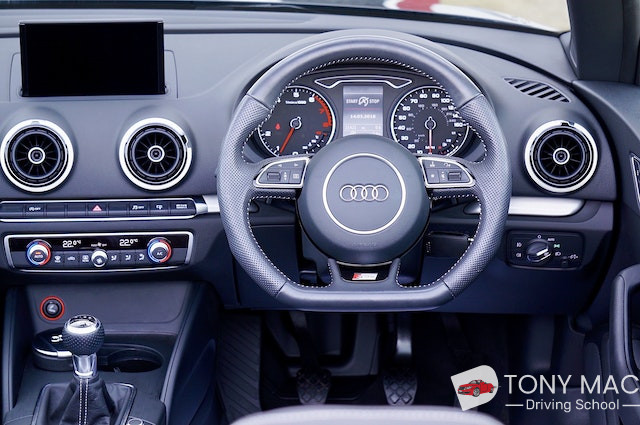Understanding Hazard Perception: An Essential Skill for Road Safety
Hazard perception is an essential element of driving education that is often neglected in favor of more concrete skills like steering a vehicle or understanding traffic indications. Nevertheless, establishing the ability to determine and prepare for prospective dangers on the road is vital for lowering accidents and ensuring the safety of all road users. This short article will check out the idea of hazard perception, its significance in driving, methods for improving this ability, and frequently asked questions related to the topic.
What is Hazard Perception?
Hazard perception includes the capability to recognize possible threats in your driving environment, including other vehicles, pedestrians, road conditions, and environmental aspects. It requires not just eager observation skills however likewise the capacity to examine dangers and respond properly to prevent accidents. Understanding and mastering Pass Plus Course is crucial for brand-new drivers and seasoned motorists alike, as it contributes to safer driving behavior.
Value of Hazard Perception
The significance of hazard perception in driving can not be overstated. Here are some essential reasons it remains a vital ability for all chauffeurs:
- Accident Prevention: Advanced hazard perception skills allow chauffeurs to foresee potential risks, permitting them to take prompt action to prevent collisions.
- Enhanced Decision-Making: Anticipating threats assists chauffeurs make notified choices regarding speed, lane modifications, and other maneuvers.
- Boosted Awareness: Hazard perception motivates an increased state of alertness on the road, which is essential for examining numerous driving conditions.
- Better Response Techniques: Recognizing threats early permits motorists to react more effectively, minimizing the risk of mishaps and injuries.
To highlight the growing significance of hazard perception, a recent research study showed that a substantial portion of accidents are associated to a driver's failure to acknowledge prospective risks in time. Learner Driver Insurance reiterates the significance of developing this ability to enhance road safety.
Improving Hazard Perception Skills
Enhancing one's hazard perception abilities requires practice and devotion. Below is a list of techniques that can aid in sharpening this important skill:
1. Practice Mock Tests
- Use online resources and apps that simulate hazard perception tests.
- Familiarize yourself with the types of threats frequently experienced on roads.
2. Take Part In Defensive Driving Courses
- Attend defensive driving courses that stress hazard recognition and threat mitigation.
- Learn from experienced instructors about anticipating risks.
3. Increase Awareness Through Observation
- Observe fellow drivers and their reactions to various road circumstances.
- Take note of pedestrians and cyclists to hone your awareness of vulnerable road users.
4. Utilize Visual Aids
- Usage videos, games, or simulations concentrating on hazard detection to enhance your perception methods.
- Analyze situations and determine prospective risks.
5. Stay Informed About Road Conditions
- Regularly inspect climate condition and traffic reports to be mindful of possible threats in your location.
- Find out about the impacts of conditions like rain, snow, or heavy traffic on driving safety.
6. Assess Driving Experiences
- After each drive, think of any hazards you came across; what you succeeded, and how you might enhance your response in similar situations.
- Discuss experiences with other drivers to learn numerous viewpoints on hazard acknowledgment.
Table of Common Hazards to Recognize
| Hazard Type | Description | Example Scenario |
|---|---|---|
| Other Vehicles | The presence of automobiles, trucks, or bikes | A vehicle all of a sudden altering lanes |
| Pedestrians | People crossing or near the road | A kid running onto the street |
| Road Conditions | Inadequately preserved or harmed roadways | Holes or a patch of ice |
| Weather | Unfavorable weather condition impacting visibility/safety | Driving through heavy rain |
| Animals | Wildlife crossing the road | A deer leaping onto the highway |
| Building and construction Zones | Locations where roadwork is happening | Employees directing traffic |
Frequently Asked Questions about Hazard Perception
1. What is the best method to practice hazard perception?
The very best method to practice is through mock tests, defensive driving courses, and interactive simulations that focus specifically on hazard detection.
2. Why is hazard perception included in driving tests?
Hazard perception is included to assess a driver's ability to recognize and react to prospective threats on the road, which is important for public safety.
3. Can hazard perception enhance with experience?
Yes, as motorists gain experience on the road, they frequently progress at acknowledging threats due to increased exposure and awareness.
4. Exist tools offered for training in hazard perception?
Yes, there are numerous online platforms, apps, and driving simulators readily available that deal training and testing in hazard perception.
5. How does Eco-Driving Lessons vary from basic observation?
While basic observation concentrates on noticing things and motions, hazard perception specifically includes assessing the risks connected with these observations and anticipating possible threats.
In conclusion, hazard perception is a vital skill for all motorists, promoting safety and avoiding mishaps. By comprehending what makes up a hazard, actively enhancing this ability through practice, and utilizing efficient methods, motorists can substantially enhance their road safety requirements. As the driving landscape evolves with innovation and urban development, honing hazard perception skills will remain a vital component of safe driving practices for many years to come.

